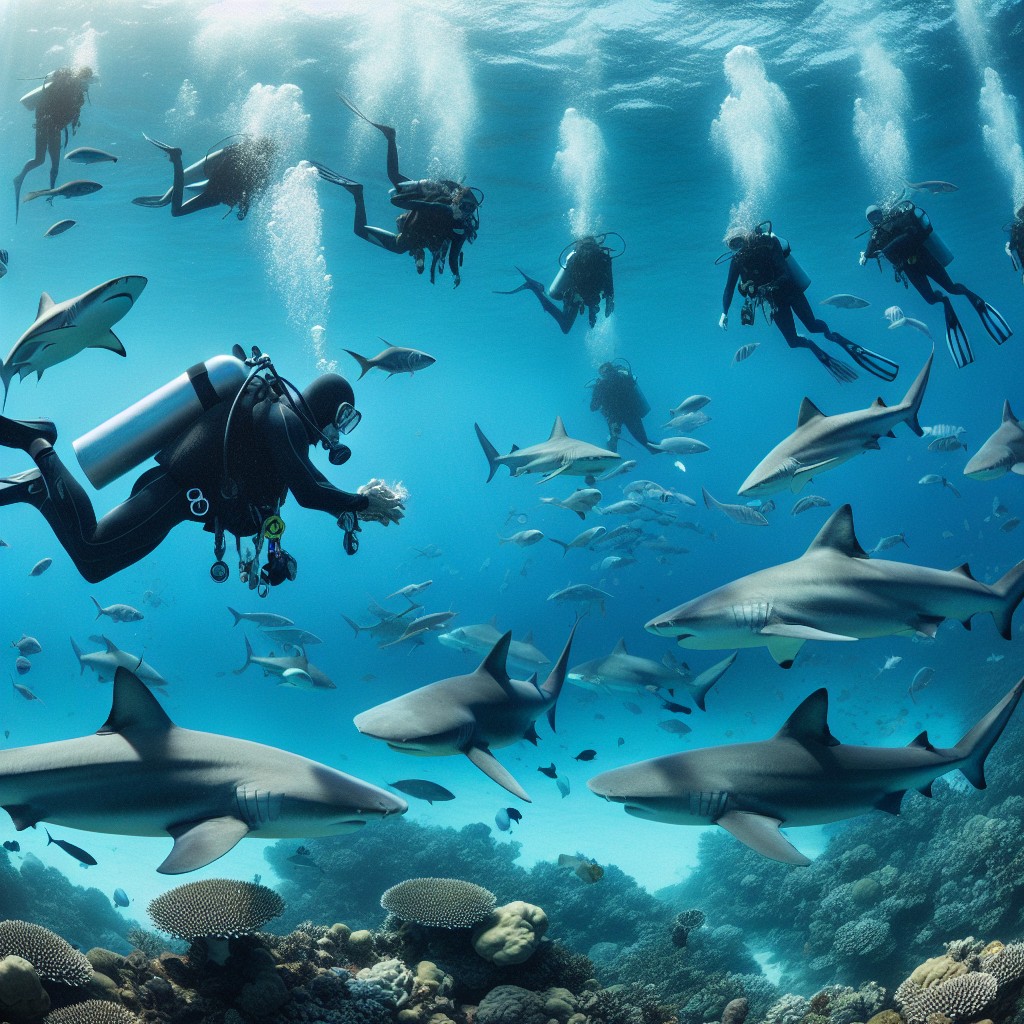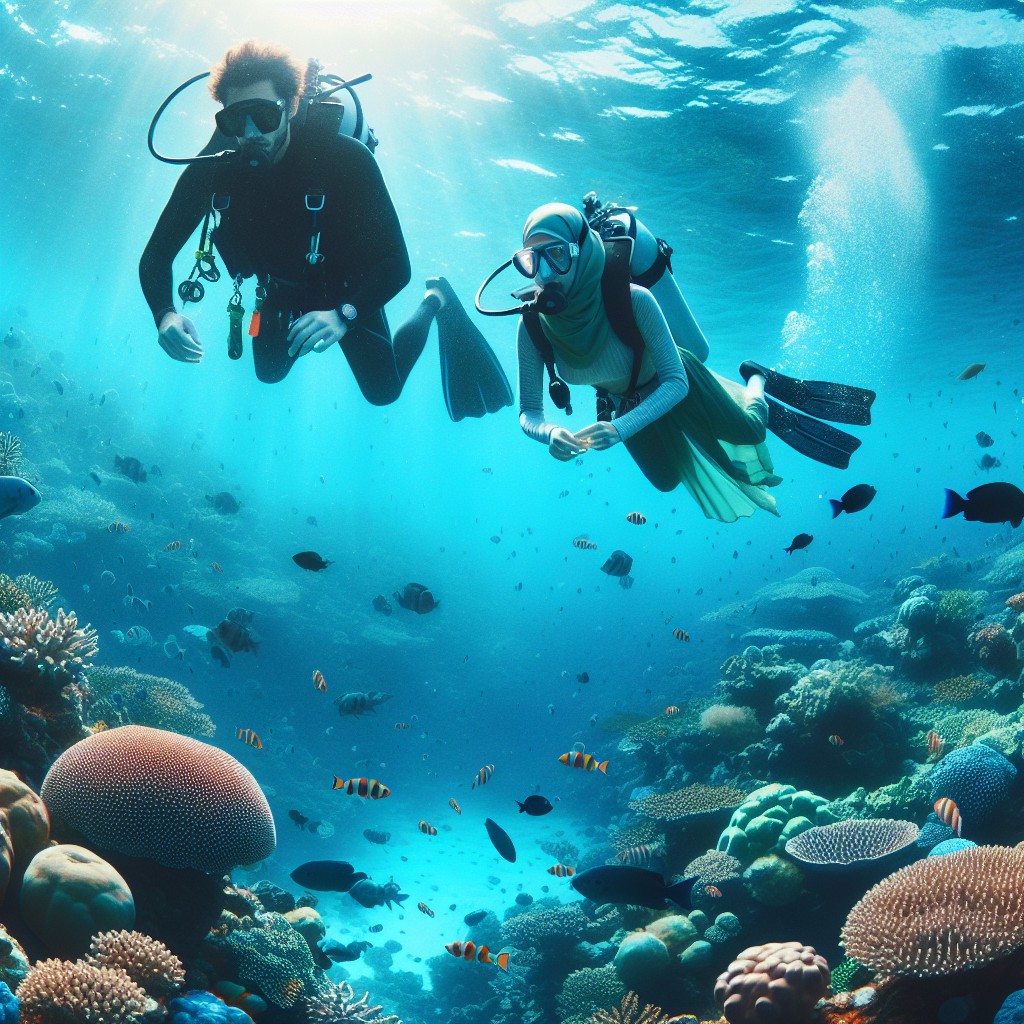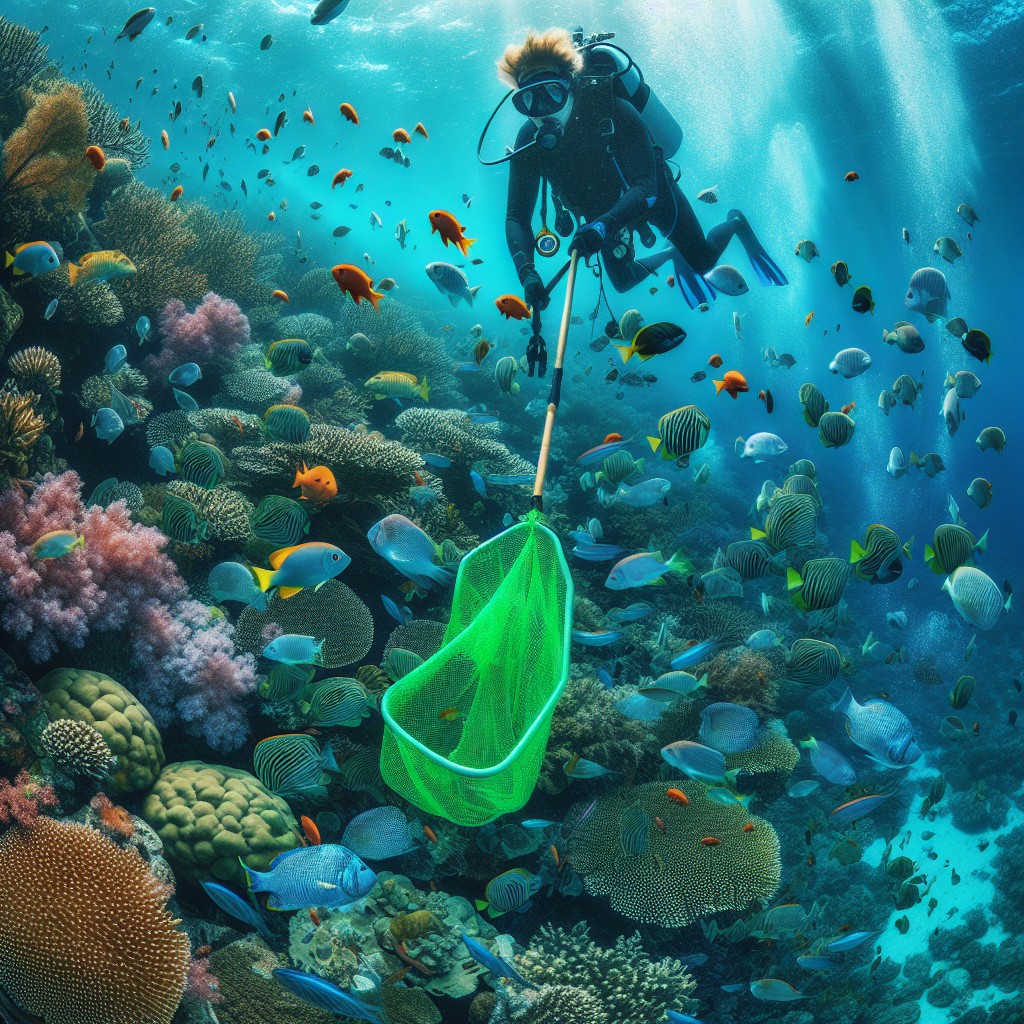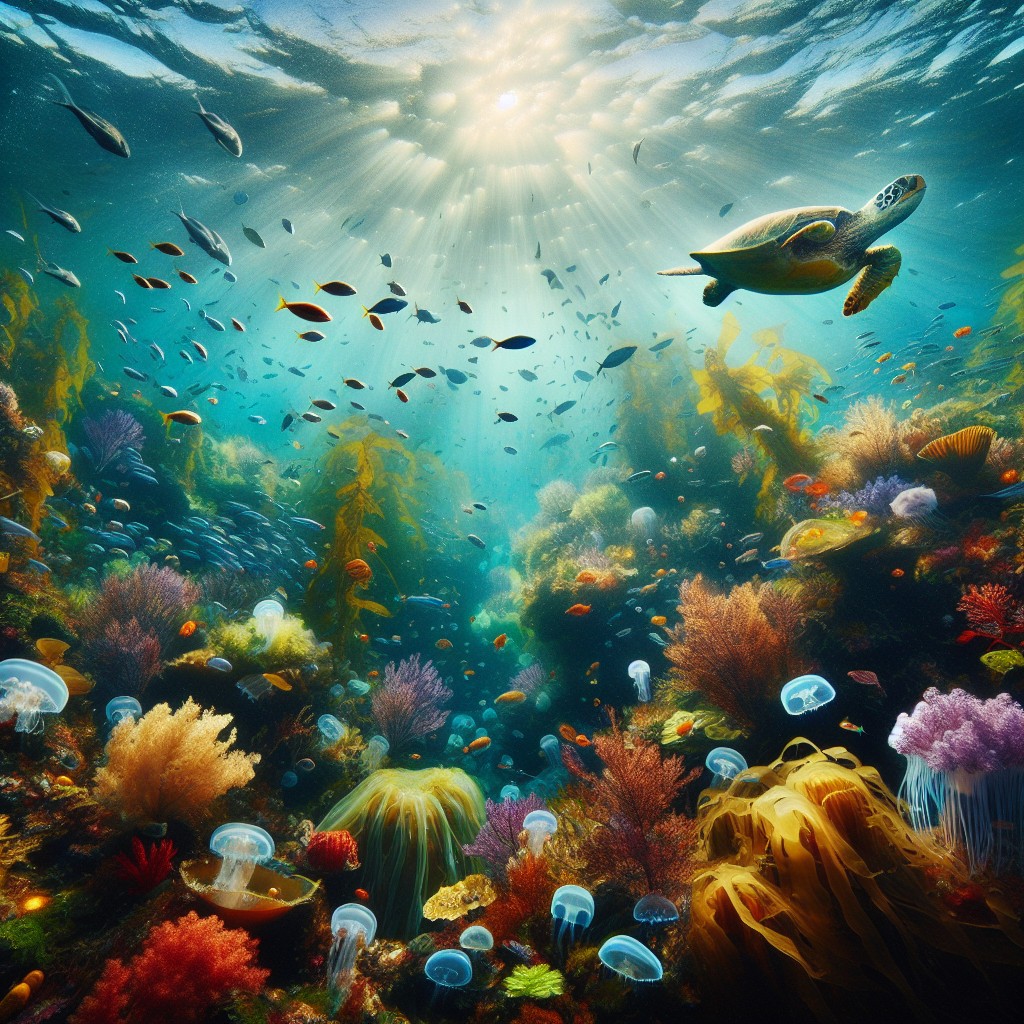Diving Opportunities in Japan
Japan offers a diverse range of scuba diving experiences, with stunning underwater landscapes and a rich marine ecosystem. For divers planning their next holiday, understanding the best diving season and identifying unforgettable dive sites is key.
Best Diving Season in Japan
The optimal time for diving in Japan is from late summer to early autumn, particularly in September and October. During this period, the typhoon season generally concludes, providing clearer waters and enhanced visibility. It is also the best time for experiencing encounters with large marine life, such as hammerhead sharks (ScubaBoard).
| Month | Conditions | Notable Marine Life |
|---|---|---|
| June | Warm, some rain | Varies |
| July | Warm, better visibility | Sea turtles, mantas |
| August | Warm, excellent visibility | Tropical fish, mantas |
| September | Warm, peak visibility | Hammerhead sharks |
| October | Cooler, clear waters | Large marine life |
Unforgettable Dive Sites in Japan
Japan boasts numerous unforgettable dive sites that cater to various interests. Each site presents unique marine encounters and spectacular underwater scenery.
-
Kerama Islands
Known for its vibrant reefs, the Kerama Islands offer opportunities to see sea turtles and enjoy top-class visibility. It is an ideal location for both novice and experienced divers (Visit Okinawa Japan). -
Yonaguni Island
Famous for its underwater ruins, Yonaguni Island allows divers to explore mysterious stone structures that some believe to be remnants of an ancient civilization. It is also a hotspot for hammerhead shark sightings. -
Ishigaki Island
This site is renowned for diving with manta rays, offering a chance to observe these magnificent creatures in their natural habitat. The coral reefs around Ishigaki are home to diverse marine life that enhances the diving experience. -
Hokkaido
In this northern region, divers can explore icy waters and unique underwater geology. Hokkaido is known for its vibrant crustaceans and spectacular dive conditions, especially during the winter months for ice diving (ice diving in hokkaido). -
Tokyo Dive Sites
For those looking to dive near the urban environment, various dive spots around Tokyo offer encounters with local marine life, including interesting fish species like boxfish and damselfish (marine life in japan waters).
These dive sites exemplify the diversity of underwater experiences available in Japan, making it an exciting destination for scuba divers looking to explore myriad marine environments. Whether swimming with manta rays or uncovering ancient ruins, Japan’s diving opportunities are truly remarkable. For more information on the best dive sites, check out our article on best dive sites in japan.
Marine Diversity in Okinawa
Okinawa is renowned for its stunning underwater environments that cater to scuba divers eager to explore diverse marine life. The region’s clarity and rich biodiversity make it a top destination for diving enthusiasts.
Vibrant Reefs of Okinawa
The reefs of Okinawa are teeming with life and colour, attracting divers from all over the globe. With a combination of vibrant coral formations and crystal-clear waters, divers can experience breathtaking scenery beneath the surface. The waters are home to a vast variety of coral and fish species, as well as impressive marine creatures like sea turtles, manta rays, and even hammerhead sharks (Visit Okinawa Japan).
| Reef Type | Locations | Notable Marine Life |
|---|---|---|
| Fringing Reefs | Nahi Island | Manta Rays, Clownfish |
| Barrier Reefs | Kerama Islands | Sea Turtles, Damselfish |
| Atoll Reefs | Sesoko Island | Hammerhead Sharks, Moray Eels |
The dense biodiversity found in these waters makes them an ideal location for both beginner and experienced divers looking to witness the beauty of marine ecosystems.
Encounter Marine Life in Kerama Islands
The Kerama Islands, situated off the coast of Okinawa, are particularly famous for their abundant marine life and stunning dive sites. The islands are a sanctuary for a multitude of species, providing divers with the chance to encounter an impressive range of organisms.
Diving in the Kerama Islands offers opportunities to explore expansive coral gardens and witness the vibrant underwater life. The clear waters enhance the visibility, making it easier for divers to observe marine creatures in their natural habitats. Some notable species that divers can encounter include:
- Sea Turtles
- Manta Rays
- Hammerhead Sharks
The combination of clear waters, rich marine biodiversity, and varied underwater landscapes makes the Kerama Islands a must-visit for anyone interested in diving with sharks in Japan. The islands not only offer stunning visuals but also allow divers to connect with the marine environment in a profound way.
For those looking to explore more dive locations, check out our article on diving in Okinawa or get tips on the best dive sites in Japan.
Diving Experiences Across Japan
Japan offers a myriad of scuba diving experiences, making it an exciting destination for divers seeking unique encounters with marine life. From vibrant coral reefs to mysterious underwater ruins, there are plenty of opportunities to explore. Below are some notable diving experiences and regional diving seasons.
Unique Diving Encounters
Diving in Japan allows divers to encounter a plethora of marine species and stunning underwater landscapes. Specific regions are renowned for unique encounters. Some highlighted experiences include:
| Region | Unique Encounters |
|---|---|
| Okinawa | Manta rays at Ishigaki; hammerhead sharks at Yonaguni |
| Hokkaido | Crustaceans and possible ice diving adventures |
| Tokunoshima | Sea turtles, known for their grace and beauty |
| Tokyo | Various sea creatures in urban waters |
Divers can explore reefs, caves, and even glaciers, interacting with a diverse assortment of marine life including boxfish, damselfish, and wrought-iron butterflyfish (Japan Travel).
The waters around Okinawa are particularly rich in biodiversity. Divers may swim with manta rays and explore the enigmatic underwater structures that hint at Japan’s historical culture (Visit Okinawa Japan).
Diving Seasons in Various Regions
Understanding the best times to dive in different regions of Japan is crucial for planning a successful dive holiday. Below is a table highlighting diving seasons across several popular locations:
| Region | Best Diving Season | Notable Marine Life |
|---|---|---|
| Okinawa | April to October | Manta rays, hammerhead sharks |
| Hokkaido | July to September | Crustaceans, cold-water marine life |
| Tokunoshima | April to October | Sea turtles |
| Yonaguni | December to March | Hammerhead sharks during specific months |
| Tokyo | Year-round | Diverse urban marine life |
Okinawa stands out as an optimal diving destination, with vibrant coral gardens and a chance to witness the underwater ruins of Yonaguni Island during its peak season (Japan Travel).
Divers interested in diving with sharks and witnessing large marine life can explore the depths of Yonaguni Island, particularly during the winter months when hammerhead sharks are more frequently spotted. Moreover, while diving in Tokyo, divers can encounter various sea creatures throughout the year, adapting their dives to seasonal variances in weather and marine activity.
Preparing for a diving adventure in Japan involves choosing the right time to experience the best the ocean has to offer. For detailed insights, refer to our guide on the best time of year for scuba diving in Japan.
Diving Certifications in Japan
Embarking on a scuba diving adventure in Japan can be an exhilarating experience, especially for those seeking to gain or enhance their diving credentials. Japan offers a range of opportunities for divers to earn their PADI certifications, accommodating all levels of experience from beginners to seasoned divers.
PADI Certification Options
PADI (Professional Association of Diving Instructors) certifications are the most recognised qualifications in the diving community. In Japan, divers can find numerous PADI-affiliated schools and centres across the country, providing courses in multiple languages. Some common certification options include:
| Certification Level | Description |
|---|---|
| PADI Open Water Diver | Ideal for beginners, this course teaches fundamental diving skills and knowledge, allowing divers to explore independently. |
| PADI Advanced Open Water Diver | This course builds on the skills learned in the Open Water certification, introducing additional diving techniques and specialisation options. |
| PADI Rescue Diver | Focuses on emergency management and preventative techniques, making divers aware of various situations and how to handle them. |
| PADI Dive Master | The first professional level in the PADI system, dive masters support instructors and assist with training. |
In popular diving destinations like Okinawa, Tokyo, and Ishigaki, many centres provide comprehensive PADI courses designed to suit the varying needs of diving enthusiasts.
Diving Courses in Popular Destinations
Diving courses in Japan are prevalent in some of the country’s most scenic underwater locations. Below are a few popular destinations offering training programs:
| Destination | Key Features |
|---|---|
| Okinawa | Known for vibrant marine life and stunning coral reefs, Okinawa offers diverse diving courses and experiences for all skill levels. |
| Tokyo | Several diving schools in Tokyo provide easy access to certification options while allowing divers to explore local dive sites. |
| Ishigaki | Famous for its clear waters and rich marine biodiversity, this location is perfect for divers looking to gain hands-on diving experience. |
For divers seeking memorable encounters, consider exploring sites known for diving with sharks in Japan. Various courses cater to specific interests, including wreck diving in Japan and diving with manta rays in Japan. Each region presents unique opportunities to enhance skills while exploring Japan’s breathtaking underwater world.
Ethical Diving Practices
Ethical diving practices are essential for preserving marine ecosystems and ensuring that future generations can enjoy the underwater world. Divers must be aware of their impact on coral reefs and marine wildlife while participating in activities such as diving with sharks in Japan.
Conservation of Coral Reefs
Coral reefs are fragile ecosystems that require careful protection. “Don’t Touch the Coral” is a fundamental principle for ethical divers. Coral is slow-growing and can suffer long-term damage from even brief contact. Therefore, it is vital for divers to avoid touching, holding, or taking coral to ensure its preservation, thus protecting underwater habitats. Mastering buoyancy control is crucial as it helps divers navigate underwater spaces without accidentally touching or damaging delicate coral formations.
| Coral Protection Tips | Description |
|---|---|
| Maintain Buoyancy Control | Helps avoid accidental contact with corals. |
| Refrain from Touching | Prevents physical damage to coral structures. |
| Observe from a Distance | Allows for appreciation without interference. |
Respecting Marine Wildlife
Responsible interactions with marine life are foundational to ethical diving. Divers should avoid chasing or touching marine animals, including prominent species like sharks, manta rays, and whale sharks, as this can disrupt their natural behaviors and habitats. Instead, divers should maintain a respectful distance and watch marine creatures explore their environment undisturbed. This practice fosters a healthier ecosystem while promoting safe and ethical diving experiences.
Feeding marine wildlife is another practice that should be avoided. Engaging in feeding can lead to disruptive behaviours among marine animals, interfere with their migration patterns, and pose dangers to divers. Ethical divers contribute to positive human-animal relationships by not feeding marine creatures, thereby promoting responsible tourism.
To support sustainable diving practices, divers can also opt for eco-friendly products like reef-safe sunscreen and adopt measures to reduce plastic consumption. Managing trash responsibly while diving and choosing environmentally friendly options ensures that divers leave minimal ecological footprints.
By embracing these ethical practices, divers can actively contribute to the conservation of coral reefs and the respectful treatment of marine wildlife while enjoying the breathtaking underwater world Japan has to offer. For more information on responsible diving practices, check out our article on eco-friendly diving in Japan.
Wildlife Exploration in Japan
Exploring the aquatic world around Japan offers divers an extraordinary chance to witness the country’s remarkable biodiversity. The waters surrounding Japan are teeming with life, showcasing a variety of marine species that allure scuba enthusiasts from across the globe.
Rich Biodiversity in Japan
Japan is renowned for its rich wildlife, hosting approximately 90,000 animal species, including over 150 mammals and 600 birds (JRPass.com). The marine environment teems with diverse species, creating attractive opportunities for underwater exploration.
| Category | Number of Species |
|---|---|
| Mammals | 150 |
| Birds | 600 |
| Total Species | 90,000 |
Diving in Japan, particularly in areas like Okinawa, reveals vibrant coral reefs and an array of fish species. The Kerama Islands and similar regions offer a unique chance to encounter marine creatures in their natural habitats. For a closer look at diversifying locations, refer to our guide on diving in Okinawa.
Endangered Species in Japan
Japan is home to various endangered and endemic species that are crucial to its ecological balance. These species, found in both terrestrial and marine environments, highlight the importance of conservation efforts. Divers may spot several endangered sharks and other marine life during their excursions.
For example, the sevengill shark, known for its appearance in off coast locations, is found in the deep offshore waters around Japan (PADI). Other recognizable species like the tiger shark and hammerhead shark can also be encountered, showcasing the rich variety of marine life.
| Shark Species | Characteristics | Status |
|---|---|---|
| Sevengill Shark | Found in deep offshore waters | Endangered |
| Tiger Shark | Can grow up to 16 ft (5 m) | Vulnerable |
| Hammerhead Shark | Elusive, thrives in specific areas | Vulnerable |
Learning about these unique species and their habitats enhances the diving experience, making it not only thrilling but also educational. By participating in conservation-friendly activities, divers can contribute to preserving these magnificent creatures and their environments. For tips on sustainable practices, check out our article on eco-friendly diving in Japan.
Japan’s waters provide a sensational backdrop for scuba divers, filled with captivating wildlife and unique encounters. Embracing this biodiversity enhances the allure of diving with sharks in Japan, presenting thrilling opportunities for enthusiasts.



